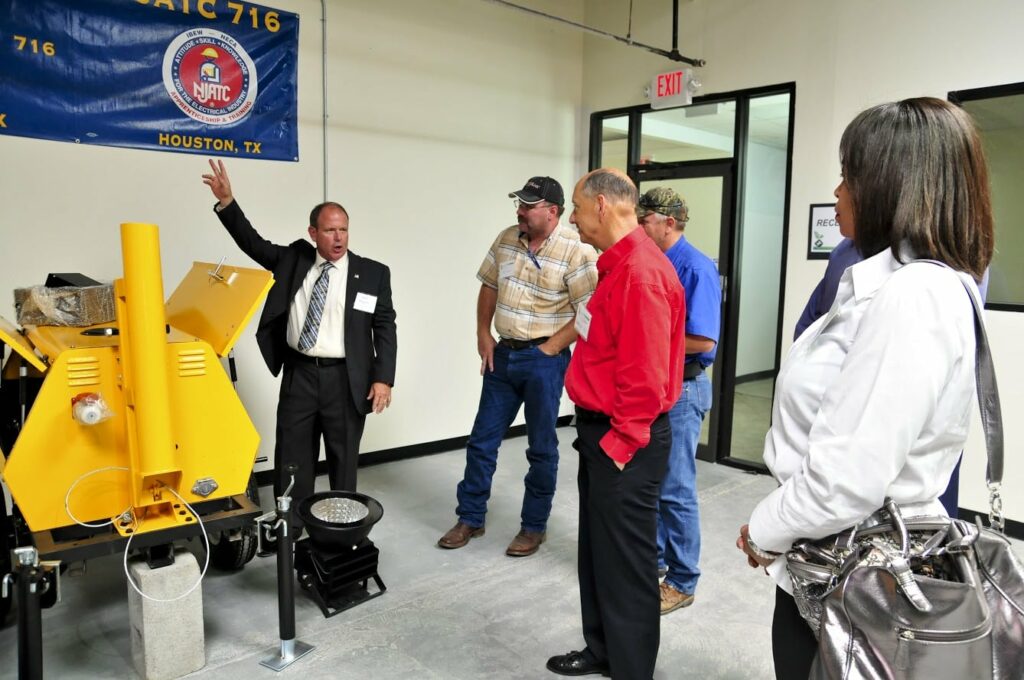John Higgins recalls a flight he took in 2009 from Los Angeles to Shanghai. Higgins, president and chief executive officer of Houston-based Neutex Advanced Energy Group Inc., was excited about his plans to bring his company’s manufacturing jobs back to the U.S. from China and shared the news with his seatmate, a Harvard MBA graduate.
“The guy called me an idiot,” Higgins recalls with a laugh. “He said I was not acting in the best interest of the company.” The passenger wouldn’t be the last person to question Higgins’ decision to return production of his core product,
LED lighting systems, to the U.S., a practice known as “reshoring.” At the time, the road leading U.S. manufacturers into China was one-way, with few executives making U-turns.
“People thought we were crazy,” Higgins says.
Yet Higgins got the last laugh. A few years later, “some of those same people who questioned our decision are calling to ask me how to reshore,” he explains.
The Case for Reshoring
The U.S. government doesn’t officially track reshoring of manufacturing operations—the number of jobs that left the United States and then returned. But Harry Moser, a 45-year manufacturing veteran who founded the Reshoring Initiative to encourage the trend, has recorded more than 300 cases since 2010, resulting in a net gain of about 50,000 U.S. jobs.
Some high-profile examples include General Electric Co., Apple Inc., Google Inc., Caterpillar Inc. and Ford Motor Co.—all of which have reshored, or have announced plans to reshore, manufacturing jobs.
The gains pale in comparison to nearly 6 million U.S. jobs that vanished from 2000 to 2010, when manufacturing employment shrank to 11.4 million from 17.3 million, according to the U.S. Bureau of Labor Statistics.
Still, economic and global trends are enough to cause some U.S. business leaders to think about reshoring. In January, the MIT Forum for Supply Chain Innovation released U.S. Reshoring: A Turning Point, which is based on a survey of executives at 340 companies. A third of the respondents were “considering” bringing manufacturing jobs back to the United States. One in six was “definitively” planning to reshore activities.
And in the ongoing series of reports Made in America, Again, analysts from the Boston Consulting Group predict that the cost advantages to manufacture in China versus the United States will dissipate by 2015. In 2000, Chinese factory wages averaged 52 cents an hour, but annual double-digit percentage increases will bring that to $6 an hour in high-skilled industries by 2015. Although wages of U.S. production workers averaged $19 an hour at the end of 2012, the analysts argue that other, nonwage factors favor the United States.
These factors include:
- Significant energy-cost advantages.
- More-flexible labor laws.
- Lower union membership in the U.S. compared with Western Europe and Japan.
- The weakened U.S. dollar.
- Rising costs of doing business in China.
Based on public reports, Moser finds that the most frequently cited reasons to move jobs from an offshored location—most often China—are wage and currency changes, followed by quality concerns, slower delivery times and higher freight costs. The United States is the top destination for high-skilled jobs, while low-skilled work is moving to low-wage areas in Asia, he says.
Moser also cites HR-related issues contributing to reshoring:
- Time zone differences that require employees to work odd hours.
- A lack of collaboration and innovation among employees.
- Travel time and expense.
- Language and cultural barriers.
These factors may lead executives to ask if it makes sense to reshore. If the analysis reveals that the cost to manufacture offshore is within 10 percent of what it costs in the United States, the company should reshore, advises Harold Sirkin, managing director of the Boston Consulting Group’s Chicago office and co-author of Made in America, Again. “When you add in enhanced collaboration and innovation, then you more than compensate for that 10 percent by reshoring to the United States,” he says.
Crunching Numbers
By 2009, ETwater Systems Inc., based in Novato, Calif., had been manufacturing automated irrigation control systems in China for four years and was losing money. When Mark Coopersmith, managing director and partner, analyzed the numbers and the business model, he realized the problem wasn’t the products—it was China.
Being a small company, it was too difficult to manage a partner 6,000 miles away, Coopersmith says. Slow shipping times and longer response times to customer needs and orders were eating into profits. When he priced out all the costs of manufacturing in China against producing in the United States, he discovered a mere 10 percent higher cost to reshore.
“That shocked us,” he recalls. “Our production runs were small, especially compared to Chinese manufacturing runs. Larger companies with larger runs can get the cost lower than we can in China. So reshoring doesn’t make sense for everyone, but it made sense for us.”
Executives at ETwater Systems selected General Electronics Assembly in San Jose, Calif., as the company’s manufacturing partner. Since reshoring production two years ago, the company has more than doubled sales and tripled profit margins. “We have kept our head count flat, around 25 employees, because we have asked our manufacturing partner to incorporate the latest manufacturing technology, to think smarter, to problem-solve and to innovate,” Coopersmith says. Noting that the facility is a one-hour drive from headquarters, he adds, “Our travel budget is a lot less.”
And the company quickly realized other gains, such as improved customer service, better inventory management, product innovation and enhanced quality.
Location, Location, Location
Once a company commits to reshoring, one of the most important questions then becomes where to set up shop.
In 2011, Florence County, S.C., wooed and won an Otis Elevator Co. plant. The Framingham, Conn.-based elevator manufacturer relocated 360 jobs from Mexico that pay an average of $25 an hour. Florence County offered a drastically reduced property tax rate for 30 years as well as cash incentives for employing residents.
But the decision wasn’t based solely on incentives, says Gregory Garger, vice president of HR. “This move brings manufacturing closer to customers, given that 70 percent of Otis’ U.S. and Canadian customers are located east of the Mississippi River,” he said. “This is especially important since logistics costs have become an increasingly more important issue.”
Garger says HR played a pivotal role in selecting Otis’ location, developing relocation and recruitment strategies, and onboarding employees.
Neutex Advanced Energy’s Higgins traversed the country, lured by economic development agencies in Michigan, Pennsylvania, Georgia and Texas.
“We were initially intrigued by the handouts,” Higgins admits. “But we had a moment of clarity when we sat down and went through the list of what we needed. Many of those places didn’t have what we needed in terms of transportation, infrastructure and the workforce. That’s when we realized Houston was the best place,” even though the Texas city didn’t offer tax incentives.
For reshoring to accelerate, manufacturing will have to address the skills shortage and image problems.
Promoting Manufacturing
Decades of offshoring—beginning in the 1970s to Japan, Mexico, and parts of East Asia and Latin America, and accelerating at the beginning of this century to China—have left a dearth of skilled manufacturing labor in the U.S.
The U.S. Department of Labor reports that the median age of the manufacturing workforce rose from 40.5 years in 2000 to 44.1 years in 2011. The Society of Manufacturing Engineers predicts that the shortfall of skilled factory workers could increase to 3 million by 2015 because of the aging workforce and retirements.
Manufacturing has a PR problem, Sirkin notes. “There is a bias against manufacturing jobs, especially among young people, because they’re seen as brawn and not brain. But actually, the new types of manufacturing jobs require about 90 percent brain and 10 percent brawn.”
In a 2011 Deloitte survey of 1,000 randomly selected adults, only 33 percent said they would recommend manufacturing as a career for their children, and only 19 percent agreed with the premise that “Our school system encourages students to pursue careers in manufacturing.”
Moser says the U.S. Department of Education could do more to promote manufacturing as a career for high school graduates. “Young people don’t know the kind of career manufacturing can offer them,” he says. “Guidance counselors in high schools don’t steer students in that direction because they don’t know about it either. Manufacturing has been pronounced dead in the United States.”
Building the Pipeline
The skills shortage will worsen sharply if companies, colleges and municipalities don’t act quickly. Welders, machinists and industrial-machinery mechanics are in shortest supply, according to the Boston Consulting Group. “We will need to train a fair amount of people to support the reshoring trend,” Sirkin says.
That’s the strategy Human Resources Manager Danna Hewick used when she joined Chesapeake Bay Candle in Rockville, Md., three years ago—just when executives were beginning to discuss reshoring. Wages at China and Vietnam facilities were rising, as were shipping costs. “It made more sense to come back,” she says.
Hewick immediately began working with the Anne Arundel Economic Development Corp. to find a pool of workers in Maryland and get them trained. Chesapeake Bay Candle partnered with the agency to design training and offset costs. “They also helped us with job fairs and advertising to promote that we would be hiring,” Hewick says. The manufacturing facility opened in Glen Burnie, Md., in June 2011 with 15 employees and grew to 60 by 2013. The number of workers is expected to reach 100 by the end of the year. The Maryland facility serves North America; factories in China and Vietnam serve Asian markets.
Hewick says, “It’s been very rewarding as an HR professional to promote manufacturing as a career. Every one of our supervisors, managers and higher-skilled positions has been promoted from within. It’s one thing to tell new hires that there’s growth here; it’s another for them to witness it.”
Do Your Homework
To build the company pipeline, Hewick is talking with educators at Anne Arundel Community College about training. Her next step is to partner with high schools to establish apprenticeships. She also plans to reach out to other Maryland manufacturers to collaborate on training.
When she does, Hewick can learn from partnerships like Apprenticeship 2000 in Charlotte, N.C. The four-year technical apprenticeship program is available to high school juniors and seniors who train at area companies and earn mechatronic technology degrees and apprenticeship certification. Students who complete the program are guaranteed jobs paying at least $34,000 a year as tool-and-die makers, technicians, welders or machinists. The program provides a pipeline to participating manufacturers as well as publicity for the manufacturing industry. No one can predict whether the reshoring trend has legs or if this is a temporary bump.
ETwater’s Coopersmith says he won’t take the option of manufacturing again in China off the table: “If we find the competitive balance fundamentally changes, of course we will consider moving.”
Neutex still has partners in China, Finland, Macedonia and Mexico to source parts. “It would be very naive of me to think that in this global economy there aren’t benefits to partnering with manufacturers in other countries where the parts are made more cheaply,” Higgins says. But for now he is happy with his decision to reshore manufacturing to Houston.
After making a decision and narrowing location choices, HR professionals would be wise to reach out to colleges, government bodies and high schools to establish training partnerships, Higgins advises. “Do this well before you need to start hiring.”
By Adrienne Fox
America Inc.
SHRM 


